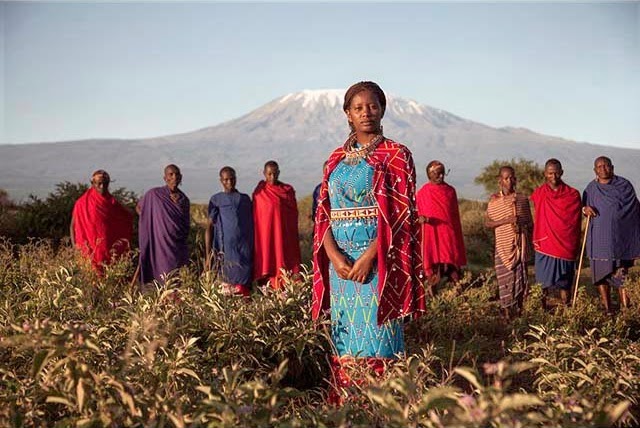 When Nice Nailantei Leng’ete was age 8, she hid with her sister in a tree to escape female genital mutilation (FGM)--a common practice in her culture of cutting a young girl's genitals without anesthesia. Now, almost 20 years later, Leng’ete has helped nearly 15,000 girls escape “the cut” and the child marriage that usually follows soon after.
When Nice Nailantei Leng’ete was age 8, she hid with her sister in a tree to escape female genital mutilation (FGM)--a common practice in her culture of cutting a young girl's genitals without anesthesia. Now, almost 20 years later, Leng’ete has helped nearly 15,000 girls escape “the cut” and the child marriage that usually follows soon after.
This year she was honored for her work by being named one of Time’s most influential people, and she has given a TEDx talk about her experience. Yahoo News explains that it has been a hard-fought battle for Leng’ete, particularly in the male-dominated Maasai community where she grew up, but Leng’ete has helped introduce alternative rites of passage to the community and is working toward the goal of ending child marriage and FGM in Africa by 2030.
But don't think that this is mutilation happens only in Africa.
A new report revealed that over half a million women and girls in the US were at risk for “female genital mutilation/cutting or its consequences” in 2012.
That figure is more than ‘three times higher’ than a 1990 estimate, when 168,000 girls and women were thought to be at risk, according to the report from the Centers for Disease Control and Prevention (CDC).
For the purpose of the analysis, the CDC defined ‘at risk’ as potentially having undergone FGM in the past or at risk for undergoing FGM in the future.

The World Health Organization and United Nations define FGM as “all procedures involving partial or total removal of the external female genitalia or other injury to the female genital organs whether for cultural, religious or other non-therapeutic reasons”.
Female genital mutilation is the practice in which some or all of the female genitals are removed, typically with a blade or a razor and many times without anesthesia.
This includes removing the clitoral and the fold of skin above it, and removing labia – the inner ‘lips’ of the vagina.
In the most severe form, the inner and outer labia are removed and the opening of the vagina is closed with a small hole so the woman can pass urine and menstrual blood.

“Female Genital Mutilation, for Maasai, is a rite of passage from girlhood to womanhood. Women are not considered women unless they have gone through FGM,” Leng’ete tells Yahoo Lifestyle about the origins of the centuries-old custom of female circumcision. “FGM in my community connects to girls ending their education, with child marriage, and with teenage pregnancies. A girl is 10 or 12 years old when she undergoes FGM. Then she’s told she’s a woman, and that means she’s ready for marriage, and that means she has children. They all go together.”
Leng’ete understood this at a young age and wanted a different future. “I saw pain. I saw death. Since I was 7 years old, I used to attend these ceremonies in my community with girls undergoing FGM. I saw my friends...
... leave school and get married. And I wanted to continue my education,” she says.
Leng’ete ran away from the ceremony twice. When she returned the second time, her grandfather, a respected village elders, pressed her on her aversion to the ritual. “‘I’m only 8,'” she told the New York Times she remembers telling him. “‘Wait until I am 9.’ She added, ‘I was trying to bargain.'”
Eventually, she told her grandfather that she would rather run away forever than endure the cut. Not wanting to lose her, he allowed her to forego the ritual. Even though she had her grandfather’s permission to forego the ritual, Leng’ete was ostracized by the community. “Families wouldn’t let me play with their daughters,” she told the New York Times. “Everyone saw me as a bad example; someone who disrespected her family and went against the ways of the community.”
Without the pressure of marriage, Leng’ete became the first girl in her village to go to high school, and her school uniform intrigued the other women in her village — her unique clothing acting as a bridge that brought her back from exile. Women and girls in the Maasai community began to see Leng’ete as an inspiration — a point of hope — and to seek her out for help avoiding the cut themselves. While she hid those who asked for assistance, this made her a wanted woman in her village. So she decided on another tactic: bargaining.
For more on Leng'ete and her story on Yahoo, click here.








